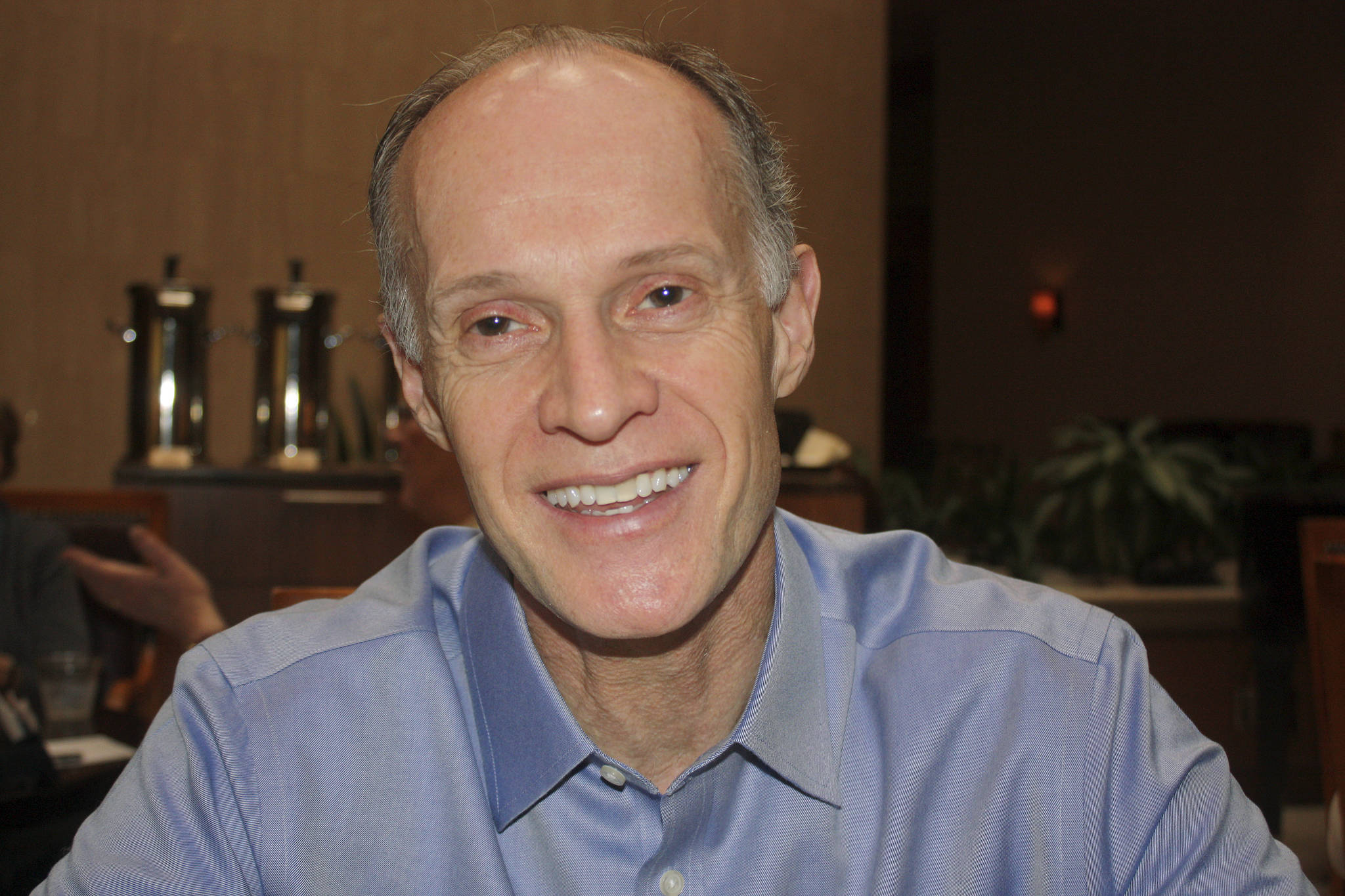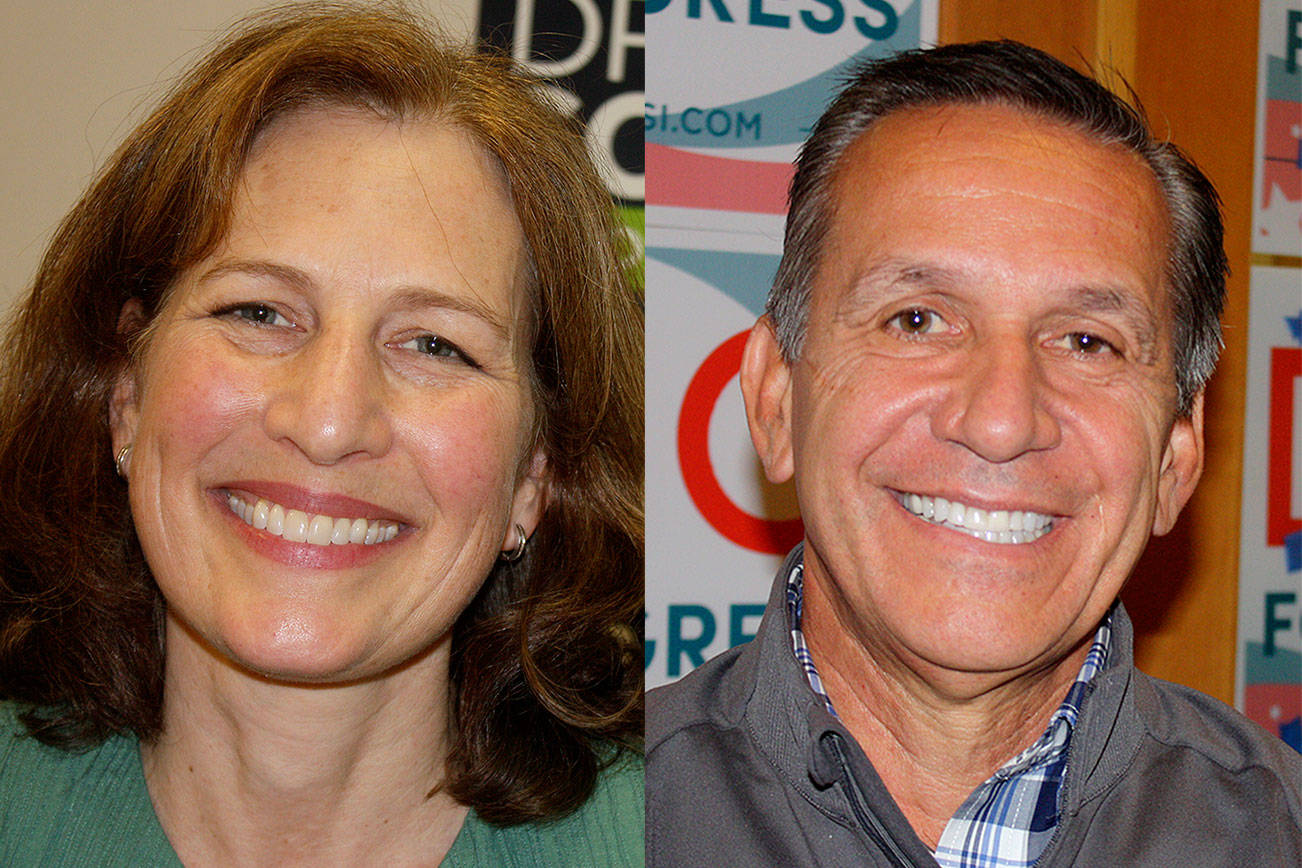Rodney Tom believes he can return to the Washington Senate and carve out a new independent centrist caucus between Republicans and Democrats in Olympia. But he has a long way to go.
First, the former two-term state representative and two-term state congressperson has to convince the suburban 48th District (Medina, plus parts of Bellevue, Kirkland, and Redmond) to put him back in office despite the baggage that comes with the two party switches he undertook during his tenure in Olympia—then a third earlier this year. Despite leading the Republicans for his last two years in Senate (2013–14), Tom is running as a Democrat in the August primary and, if me makes it, the November election. The question is whether he has read his district correctly and knows what 48th residents really think of him.
Fiscally conservative and socially liberal, the 54-year-old real-estate developer and investor has had a history of discomfort with aspects of both parties. “Both parties are catering to their extremes,” Tom says. “There is a big gap in the middle.”
While running as a Democrat, he does not want to join the Senate’s existing GOP or Democratic caucuses. If he manages to get elected, he will then try to convince some moderate senators to join him in a small third caucus—one separate from their party ties—in order to control the balance of power in a chamber where Democrats currently hold a shaky 25-24 advantage. If the split between Republican and Democratic senators is narrow enough, a third caucus could become a major power broker. Tom is betting there are enough centrists in Olympia to help him, but he hasn’t mapped out how to do that yet.
The 48th District sent Tom to Washington’s House of Representatives as a Republican in 2002 and 2004. Unhappy with the GOP’s social conservatism—especially on same-sex marriage—he switched to the Democrats in 2006, when he successfully ran for the first of his two four-year terms in the state Senate. Tom won all four of his elections with roughly 52 to 53 percent of the vote.
Then in 2011 and 2012, a group of four to seven moderate Democrats—depending on when and who was doing the counting—created the “roadkill caucus” (because roadkill is what you find in the middle of the road), which tried to pull liberals and conservatives toward the center. Tom was a core member, because he never felt comfortable with tax measures and budget expansions pushed by Seattle liberals.
Then three roadkillers—Tom, Sen. Jim Kastama (D-Puyallup), and Sen. Tim Sheldon (D-Potlatch)—unexpectedly blindsided the Democrats toward the end of the 2012 session by joining 23 Republicans to take control of the Senate floor to successfully pass a GOP-oriented budget. The shock maneuver infuriated the remaining roadkillers, and the bad blood led to the dismantling of the caucus in 2013.
Then Tom and Sheldon officially joined the GOP caucus in December 2012. This “Majority Coalition Caucus” named Tom as its official leader in an arrangement that prevented the new Senate majority from considering any bill concerning social issues. That effectively killed almost all right-wing and liberal social legislation from 2013 through 2017—with both sides focusing instead on bitter battles over taxes and education funding. Tom technically remained a Democrat while leading the Republican-dominated Majority Coalition Caucus.
Tom decided not to run for re-election in 2014, citing health problems and a need to care for his ailing father. His departure meant that 48th District voters never had the opportunity to show how they felt about Tom’s switch back to the GOP at the ballot box.
Tom’s vacated seat quickly returned to Democratic control. Cyrus Habib claimed the seat in 2014, and attorney Patty Kuderer took over the post when Habib was elected Washington lieutenant governor. Sen. Kuderer has run twice in the 48th: in 2016 for state representative and in 2017 in a special election to replace Habib, beating Libertarian Michelle Darnell both times with roughly 70 percent of the vote.
With his health problems clearing up and his father being well cared for, Tom is confident about his chances against Kuderer, saying he knows the district intimately and that his stances mesh neatly with those of 48th voters. “I think my politics have been pretty consistent [as a centrist],” he says. Tom believes Kuderer is too big-government-oriented for the district.
Meanwhile, Sen. Kuderer also contends she is attuned with the values of the 48th District. “I fit this district very well,” she says. Kuderer argues that Tom is hoping its voters will forget his switch to the Majority Coalition Caucus in late 2012.
Right now, the 48th appears to be a solid Democratic district: All three of its legislators have come from that party for at least a decade. Only 24 percent of the district’s 2016 ballots were cast for Donald Trump. Democratic Gov. Jay Inslee captured 68 percent of the 48th’s votes in his last election.
The big question is what type of Democrats live there, says Ben Anderstone, a political consultant who focuses on demographics and voting patterns. “This is a district where there are a lot of Democrats who are not orthodox Democrats,” Anderstone says. “There’s an interesting dynamic here of representing two flavors of Democrats.” According to him, suburban Democrats tend to be much more moderate than those in Seattle. While liberal on social issues, suburban Democrats tend to be tighter with their wallets than Seattleites.
Assuming a Republican files before the May deadline to run for the 48th’s Senate seat, a three-way collision will likely occur on Aug. 7. What will voters think of Tom’s changes of allegiance in Olympia? Can he tap into moderates from both parties? Do voters see Kuderer as moderate? How solid is the GOP’s roughly 30 percent grip on the 48th? Can Tom cut much into Kuderer’s two 70 percent showings in the last two elections? Will Tom’s party leaders view him as a traitor because of the Majority Coalition Caucus?
For now, Tom plans to focus his campaign on education. The past six sessions of the state legislature have been dominated by largely deadlocked fights over raising enough money to fix education shortfalls targeted by a 2012 Washington Supreme Court ruling. That battle is either done or almost done, depending on how the Supreme Court views the legislature’s final work on this issues in the last session.
Tom noted that education’s share of the state’s operating budget has grown to 51 percent, and he does not want the legislature to backtrack below that percentage. However, he wants to pursue several education reforms that Republicans have pushed in the past few years, which legislative Democrats and the Washington Education Association oppose. These include removing tenure for teachers, allowing principals to hire and fire teachers at their schools, and installing merit-based raises. “No one would bet on the Seahawks if their roster is determined by seniority,” Tom says.
He also does not support putting some social programs—such as homeless school children—under the umbrella of more traditional education funding.
Kuderer also cites education as a main priority, although she opposes Tom’s stances on dealing with teachers. She blames Tom for helping Republicans delay the legislature’s compliance with the 2012 Supreme Court ruling.
Chris Vance—a former chairman of the state Republican party who helped found the new Washington Independents, a fledgling movement to create a centrist third party in state politics—is puzzled by Tom’s determination to stay a Democrat. “I’m not sure what Senator Tom is trying to do here,” Vance says. “To say you’re running as a Democrat, but won’t participate with the Democratic party [in Olympia]—to me, that’s odd and awkward.”
“That tells me about his motivation,” says Kuderer of Tom’s balance-of-power-oriented mini-caucus. “It’s about power. It’s about him.”
So far, the Washington Independents have three candidates running for state House seats currently held by Republicans. One is the sprawling, heavily-red 12th District from East Wenatchee to east of Moses Lake. The other two are in the more suburban, less-red districts around Puyallup and south of Bremerton.
Meanwhile, Tom is unlikely to find allies from former roadkill caucus members. Only two remain in Olympia; the rest have retired or have been defeated in earlier elections. While still a Democrat in name, Sen. Sheldon has been a solid Republican vote for most of the 21st century—a stance that has worked well for him in Mason County and southwestern Kitsap County. The other surviving roadkilller is Sen. Steve Hobbs (D-Lake Stevens), arguably one of the two or three most moderate senators in Olympia.
“Third caucus?” Hobbs says. “I don’t know how that would work.”
Besides, Hobbs has already endorsed Kuderer.








